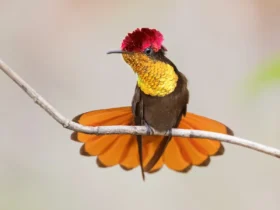In the cloud forests and high-altitude regions of South America, a tiny jewel of the avian world dances through the air—the Long-tailed Sylph (Aglaiocercus kingii). With its iridescent plumage, ethereal grace, and captivating flight displays, this stunning hummingbird has earned its place as a symbol of beauty and wonder. Let’s explore the enchanting world of the Long-tailed Sylph and discover the remarkable qualities that make it an ethereal beauty in the hummingbird realm.
Long-tailed Sylph Hummingbird images
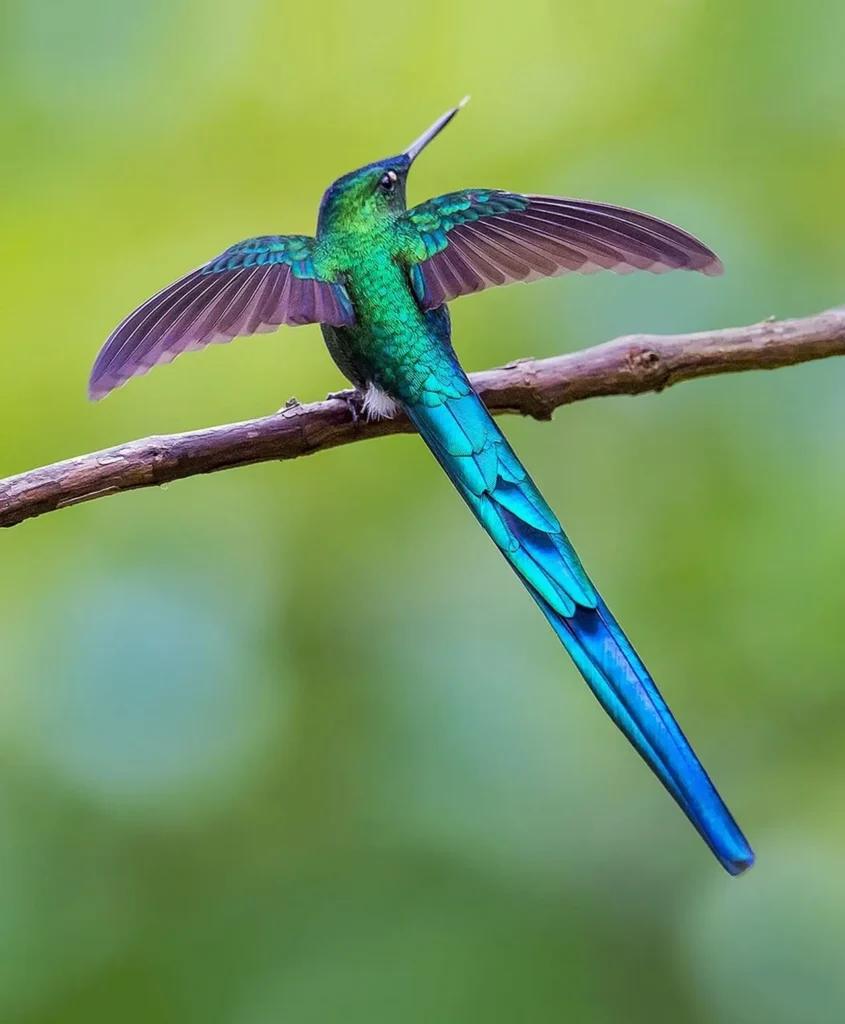
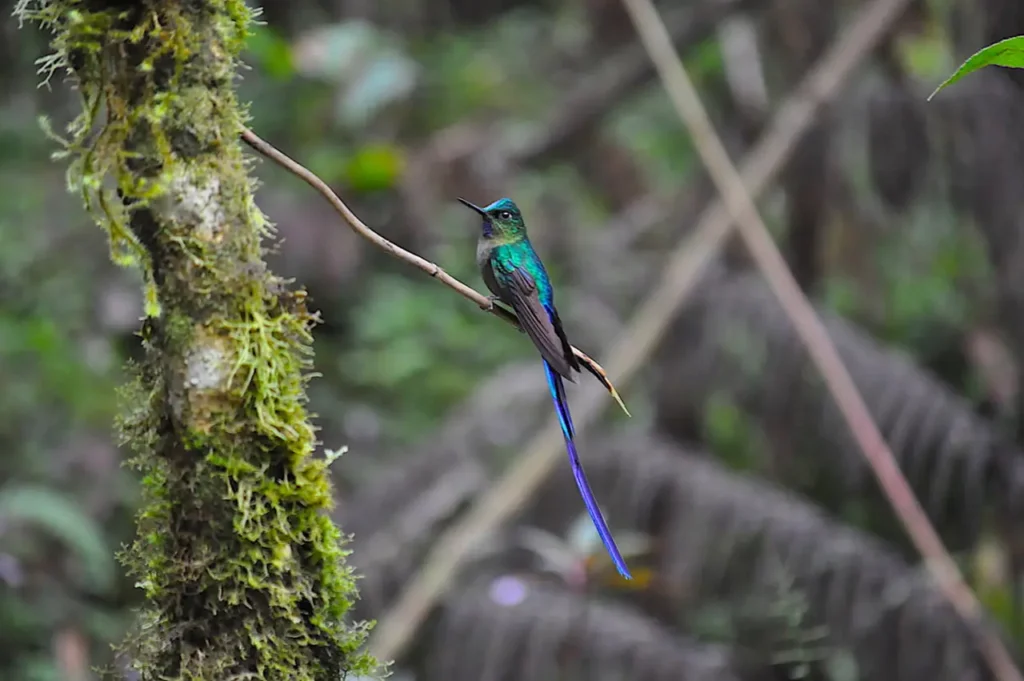
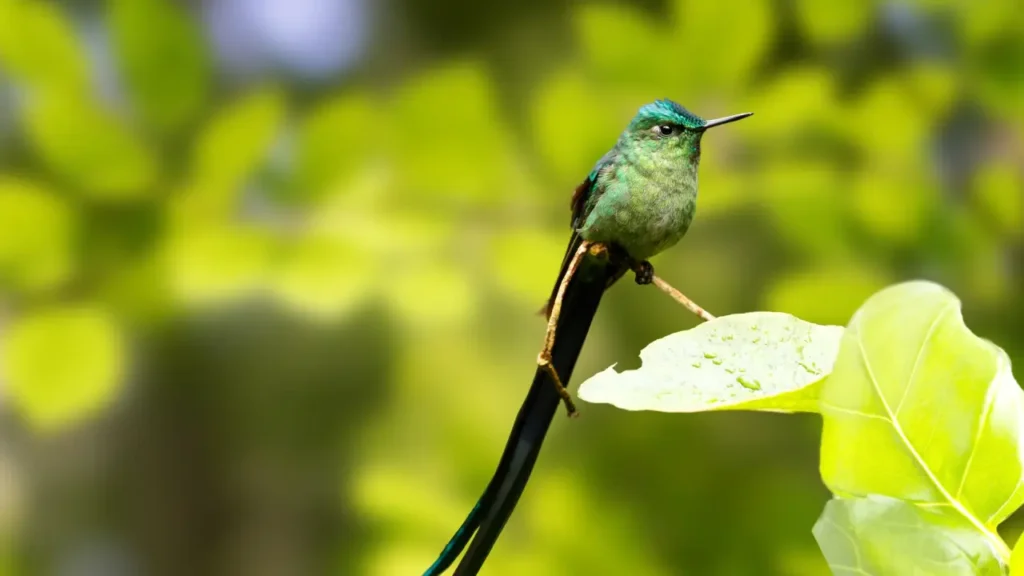
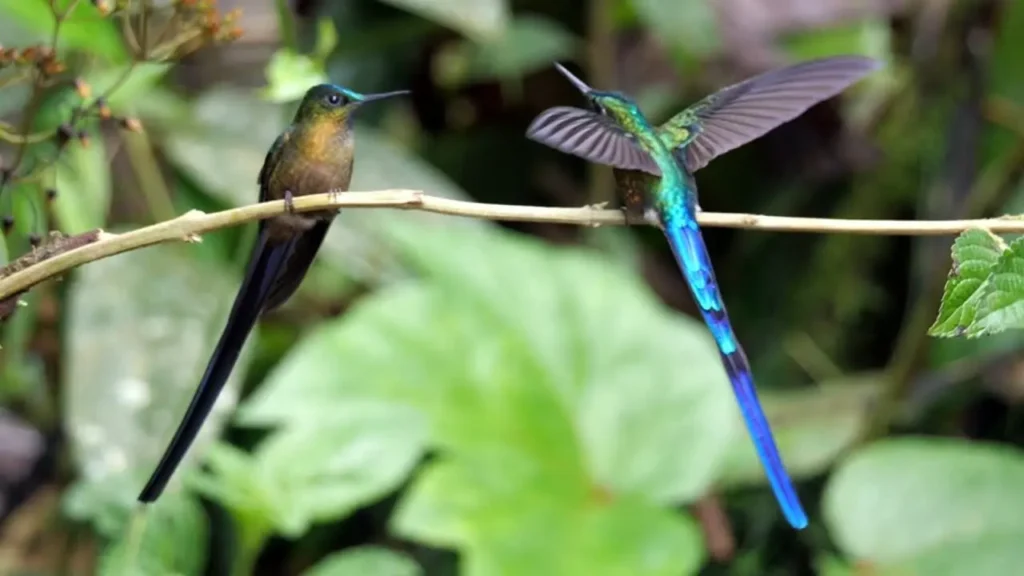

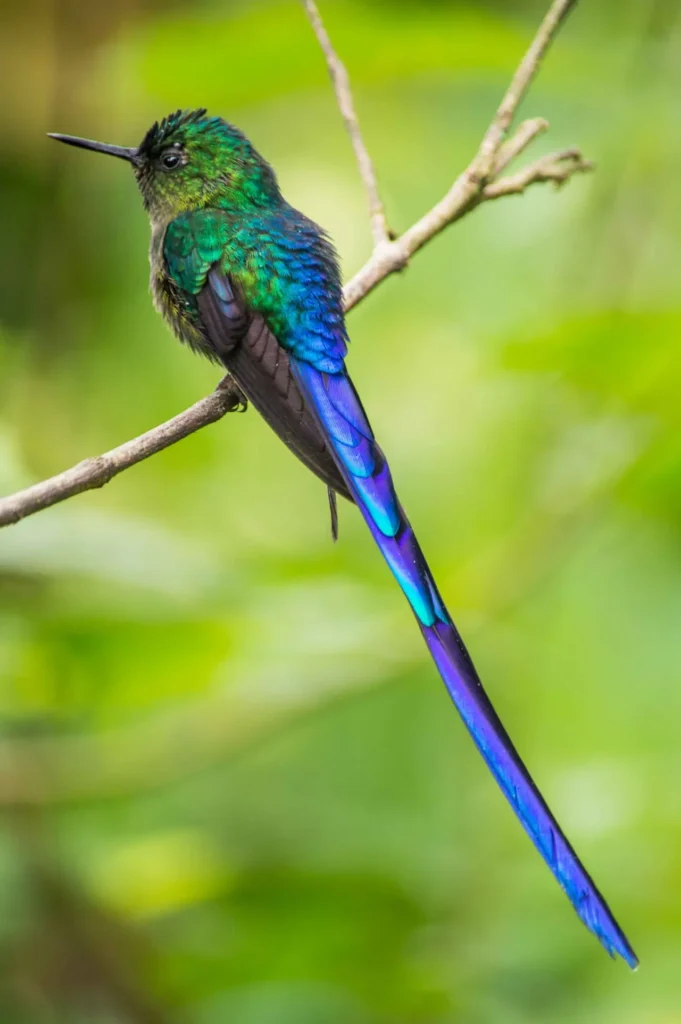
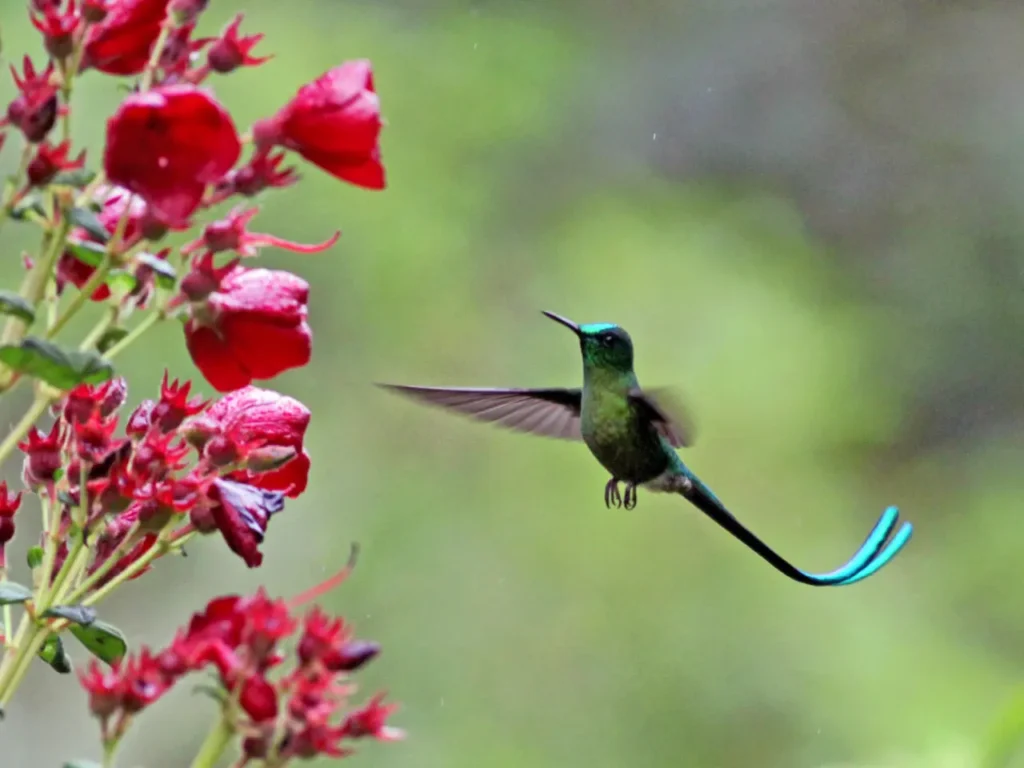
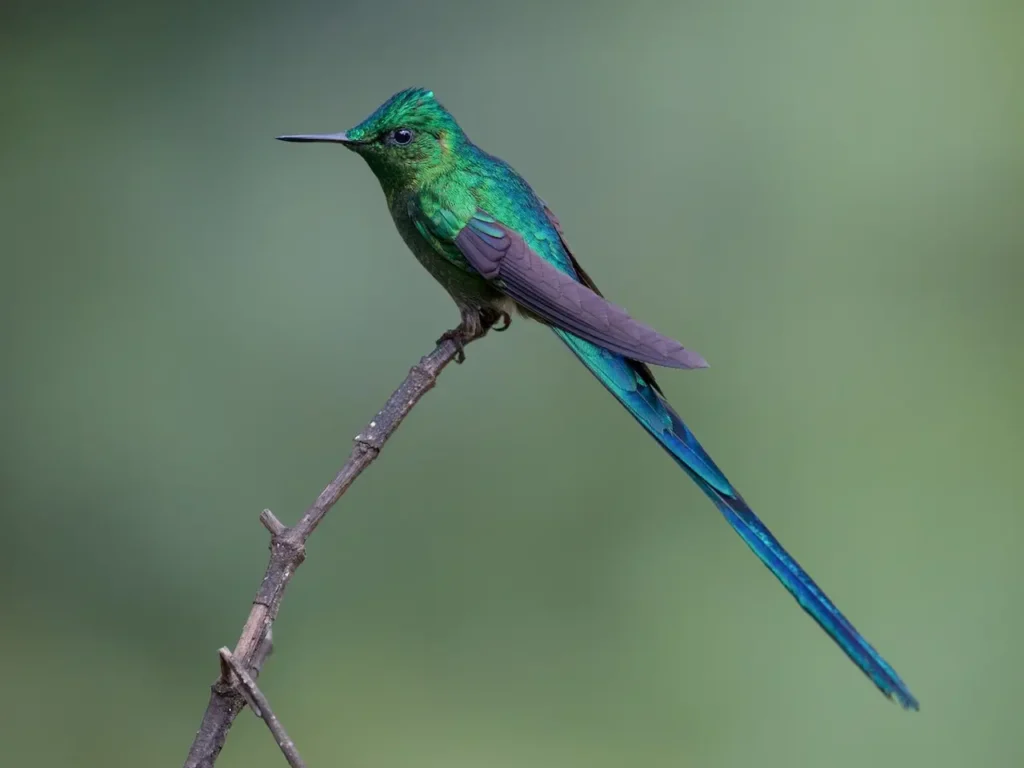
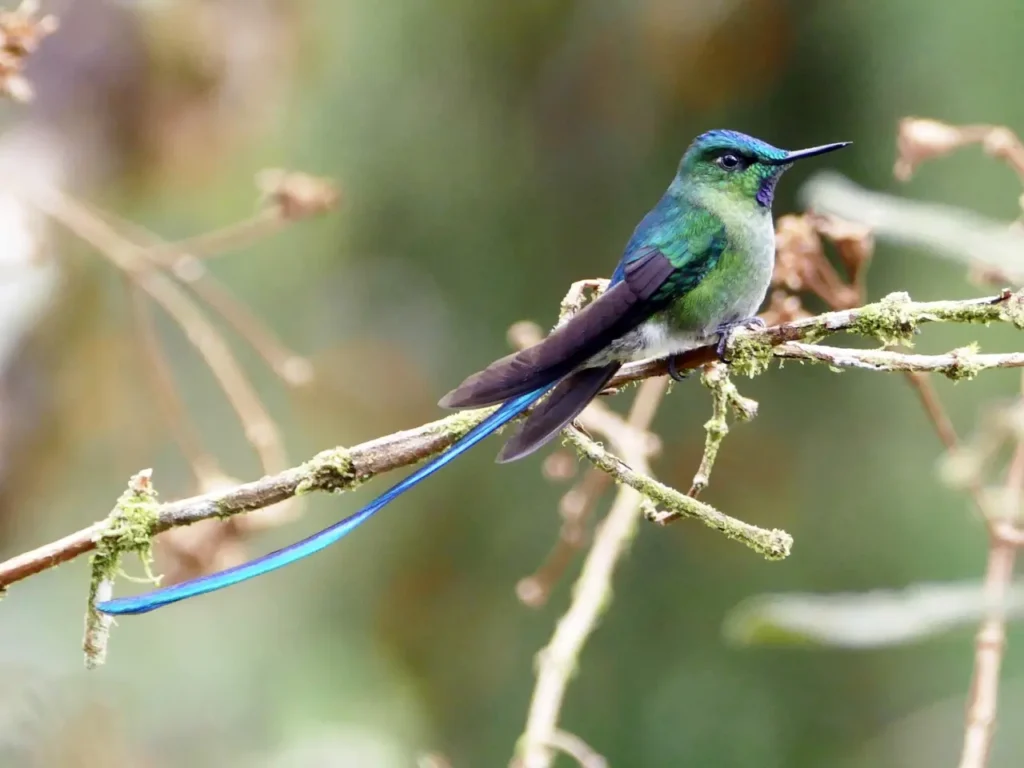

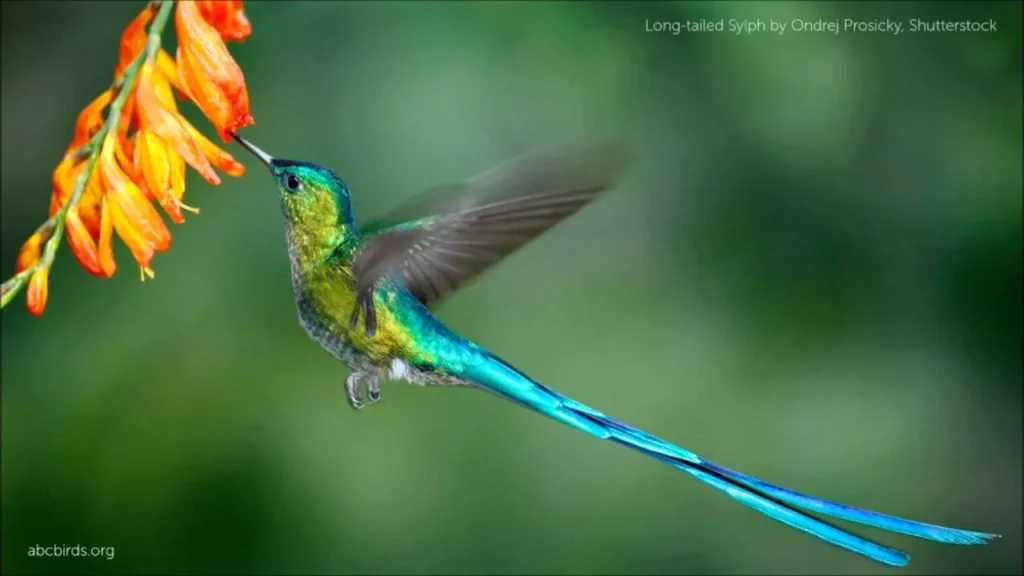
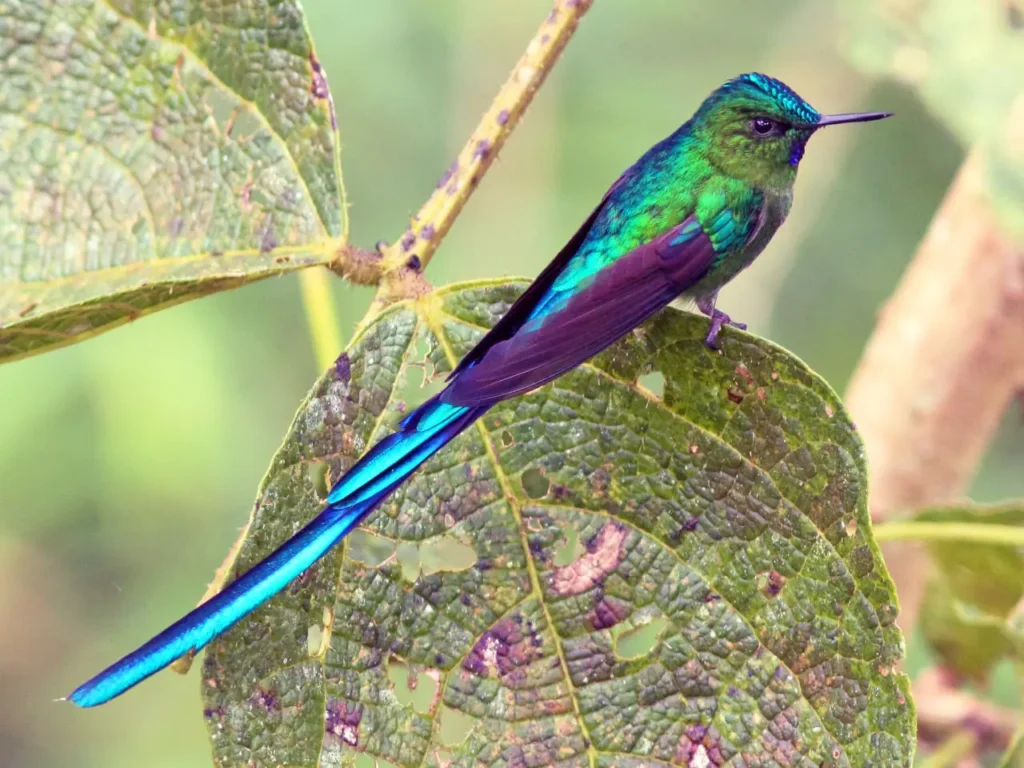
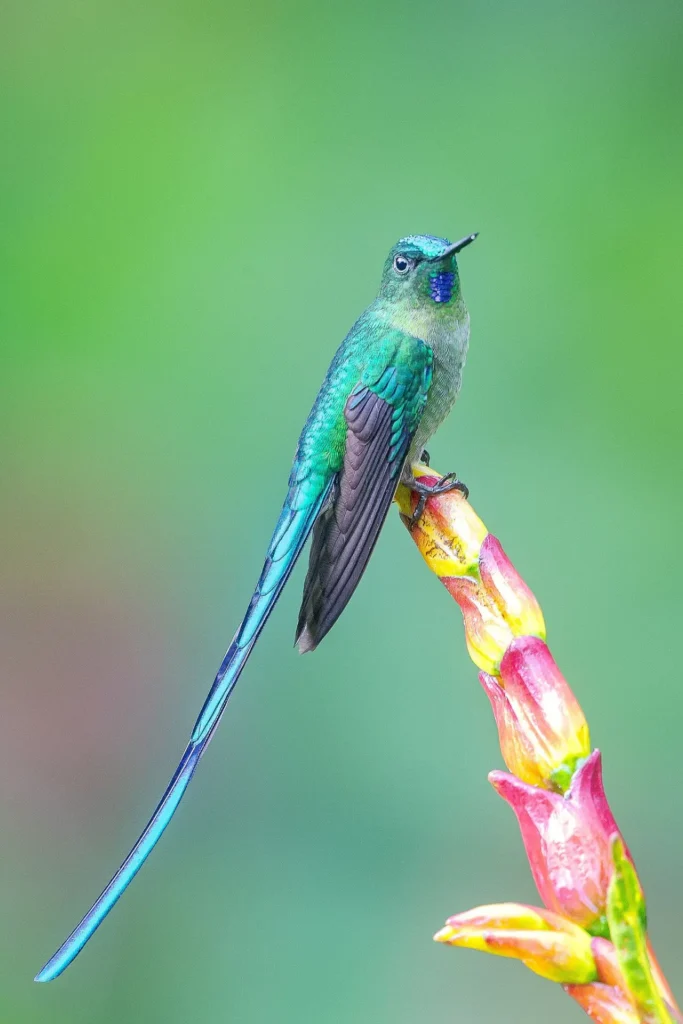
Appearance and Plumage
The Long-tailed Sylph is a small to medium-sized hummingbird with a vibrant and distinctive appearance. Males are adorned with iridescent green plumage on their upperparts, which shimmers with shades of blue and purple under the sunlight. They also display a dazzling turquoise throat patch, known as a gorget, that glows like a brilliant jewel when the light hits it at the right angle.
The most striking feature of the Long-tailed Sylph is its long, iridescent tail feathers that extend well beyond the length of its body. The tail feathers are forked and possess the same iridescent colors as the rest of the plumage. These trailing tail feathers add to the bird’s allure and elegance.
Females have a more subdued appearance with a greenish-bronze plumage and a shorter tail, lacking the iridescent gorget found in males.
Habitat and Distribution
The Long-tailed Sylph is native to the Andean cloud forests and high-altitude regions of South America. It can be found in countries such as Colombia, Ecuador, Peru, and Bolivia. These enchanting hummingbirds prefer the dense vegetation and abundant nectar sources found in their mountainous habitats.
The cloud forests, with their constant mist and cooler temperatures, provide an ideal environment for the Long-tailed Sylph to thrive. They can be seen flitting among the flowers, sipping nectar with their specialized tongues and playing a crucial role in pollinating the plants in their ecosystem.
Courtship and Flight Displays
During the breeding season, male Long-tailed Sylphs engage in impressive flight displays to attract females. They perform breathtaking aerial acrobatics, including steep dives and sudden climbs, while also showing off their long tail feathers. The fluttering of their tail feathers in mid-air creates a mesmerizing display that adds to their ethereal charm.
The males also produce distinctive whistles and trills during these courtship flights, adding an auditory dimension to their enchanting courtship rituals.
Conservation and Protection
The Long-tailed Sylph is currently listed as a species of least concern by the International Union for Conservation of Nature (IUCN). However, like many hummingbird species, it faces threats such as habitat loss, climate change, and potential competition from introduced species.
Conservation efforts focus on preserving the unique cloud forest habitats where these hummingbirds reside, as well as raising awareness about the importance of protecting biodiversity and natural ecosystems.
A Tiny Gem of the Cloud Forests
The Long-tailed Sylph stands as a tiny gem in the cloud forests of the Andes, enchanting with its iridescent plumage, graceful flight, and courtship displays. Its presence reminds us of the incredible diversity and beauty found within the avian world. By valuing and conserving the fragile ecosystems where the Long-tailed Sylph thrives, we ensure that future generations can continue to witness the ethereal beauty of this remarkable hummingbird—nature’s living jewel.
